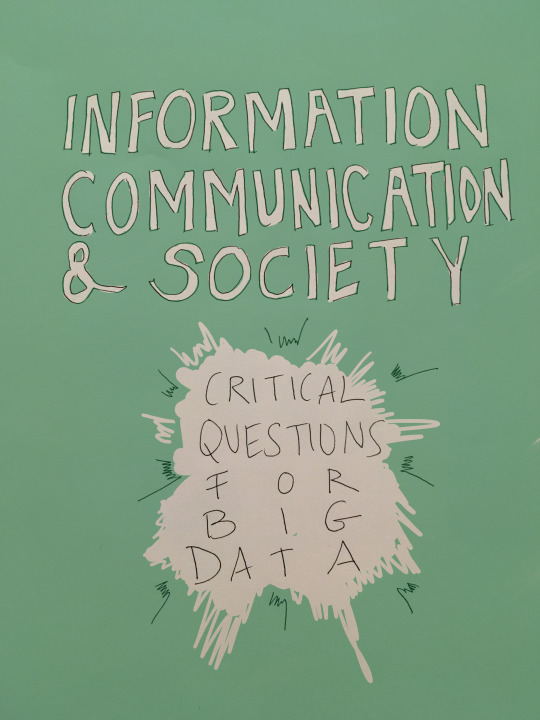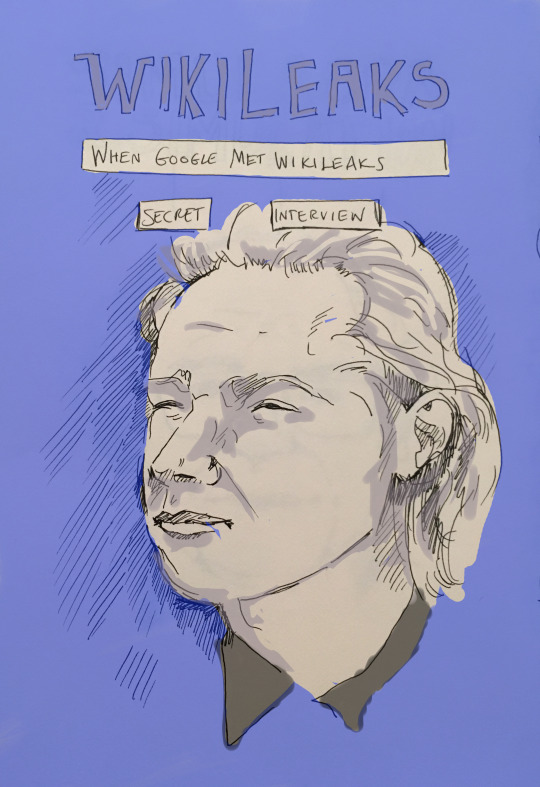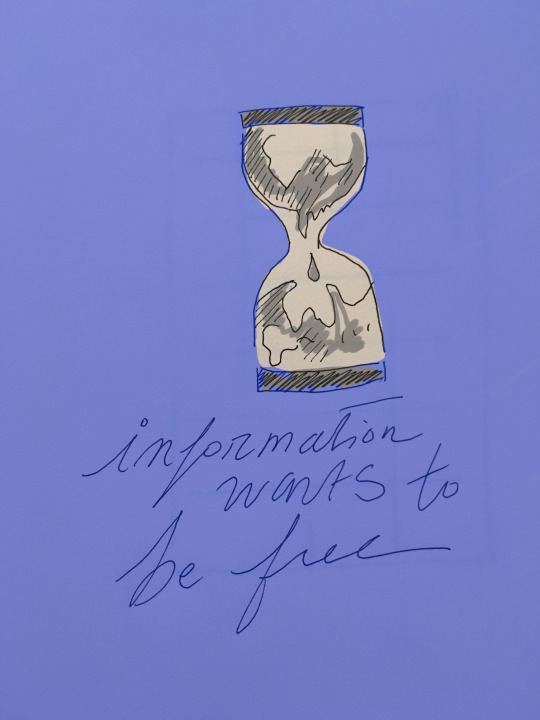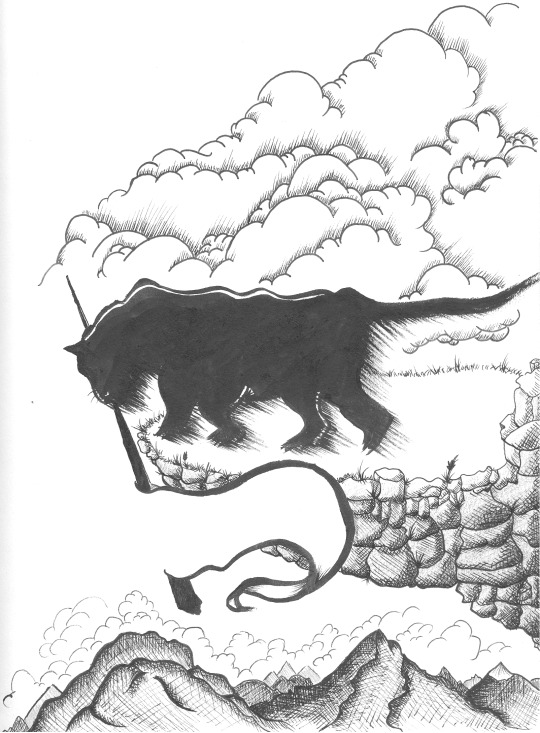STMZ is an independent art and politics magazine based in the UK. Expect rad conceptual imagery, in-depth articles on relevant issues, cool artwork and personal writings!
Don't wanna be here? Send us removal request.
Photo

Ink illustration art prints on the refugee crisis, featuring 'Ayat' who was interviewed in our main article and who made it to the UK before returning to his friends in the calais camp.
0 notes
Quote
It seems to us that there is only one answer to this question: We must recognize, and loudly proclaim, that every one, whatever his grade in the old society, whether strong or weak, capable or incapable, has, before everything, THE RIGHT TO LIVE, and that society is bound to share amongst all, without exception, the means of existence at its disposal. We must acknowledge this, and proclaim it aloud, and act up to it. It must be so contrived that from the first day of the revolution the worker shall know that a new era is opening before him; that henceforward none need crouch under the bridges, with palaces hard by, none need fast in the midst of food, none need perish with cold near shops full of furs; that all is for all, in practice as well as in theory, and that at last, for the first time in history, a revolution has been accomplished which considers the NEEDS of the people before schooling them in their DUTIES.
The Conquest of Bread, Pëtr Kropotkin (via anarchistcommunism)
259 notes
·
View notes
Photo

Special edition magazines on the refugee crisis
0 notes
Photo

Sketch banner for event at Bramleys
1 note
·
View note
Video
youtube
If you’re in NYC, call your senator, call your rep!
http://100daysofresistance.com/
0 notes
Text
Drone Warfare: The Value of Life Behind The Screen
The first drone strike outside of a declared war zone occurred in November of 2002, in Yemen and was a CIA operation with the military, coordinated from the command center in Washington DC. Six people were killed, including an American citizen. Since then, Drone technology has become almost ubiquitous. The military operations that use it are hidden in plain sight, and contain almost no official documentation despite being one of the most covert of the US government.
The advent of drone warfare makes the targeting of ‘terrorist’ individuals even more problematic, especially because The ‘specific targeting’ of drone strikes is frequently highlighted, but the characteristics of a worthy target are ever more broad and innocuous, with the United States giving its troops endless lists of potential terrorists, which never cease to expand. In his book and documentary ‘Dirty Wars’, journalist Jeremy Scahill outlines the gross human rights violations that U.S. military troops engage in whilst in countries such as Iraq, Afghanistan, and Yemen.
American citizens have now been killed without due trial by drone attacks abroad; and this is illustrated by the case of intellectual Anwar Al-Awlaki, a Yemeni Imam and Islamic lecturer. His death was considered a lawful act of war by the US government when his religious and political teachings had started to attract Islamic Extremists, causing Obama to put him on a kill list. However, according to Jeremy Scahill, this killing was unlawful due to the fact that an indictment was not pursued and the reasons for targeting him were never made public. Three other Americans, as phrased by an Attorney General, were ‘not specifically targeted’ but were also killed abroad.
‘The Drone Papers’, released on The Intercept, showcase that nine out of ten targets were not specific targets, and Edward Snowden himself made a twitter statement that this release marked ‘the most important national security news story of the year’. The process by which kill lists are compiled by the Obama administration has also been made public, exposing their ‘signature strikes’ policy, which permit the CIA and JSOC to kill without requiring the US administration to know who they kill. Unfortunately, these signature strikes are often the cause of civilian deaths, but these are considered the collateral damage of the war business.
The Bedouin tribe’s local leader said: “If you kill children and call them terrorists. If you kill children and call them Al-Qeida, you’re all Al-Qeida. (…) To us, you’re the terrorist.” The intelligence gathered by these programs which aim to discern terrorist from civilian additionally rely not only on a broad surveillance apparatus but also on the careful filtering and combing on data, which is not always accurate. Fragments of data can easily make a a terrorist profile if one is looking for terrorists. Jeremy Scahill additionally poses the question: “How do you surrender to an authority when you aren’t responding to an indictment? (…) How do you surrender to a drone in the sky above you?”.
Another aspect of drone warfare is also its reliance on technologies which allow the military to conduct operations from their bases in the US. In fact, many of the drone handlers recruited have an extensive experience in video gaming. The language of drone operations, which are imbued with a language of detachment and utilitarianism removes the perpetrator from the equation, making the strikes seem precise and necessary when they are obscure and in some cases unjustifiable.
There is an disturbing Orwellian feel to these covert military operations, which take place under the guise of a liberal democracy, and remain largely unquestioned by the public despite gross violations of human rights, criticisms from non-governmental organizations, and in which the extensive collateral damage of innocent people is chalked up to those ‘not specifically targeted’.
In this political and military order which is largely shrouded in secrecy, it is not even a case of preemptive arrests or raids but preemptive killings that we are faced with. The approbation of drone strikes and specific targets happen under secretive processes and without indictment or trial. As Jeremy Scahill makes clear: “Drones are a tool, not a policy. The policy is assassination.”.
In our virtual zine, created in creative partnership with Ben Chan, we address these issues of privacy and surveillance, and explore this theme in a context that is more personal. Based on a game environment, the participant can interact with their surroundings, which consist of familiar objects and social platforms which send notifications to disrupt gameplay. The game contains hidden books which, if approached, reveal quotes about the surveillance apparatus and modern society.
The artwork starts by revealing small clues about how surveillance is embedded in our everyday lives — through our social media platforms, through our social institutions, and through the state. As Edward Snowden states: “Technology has changed. Instead of sending people to follow you, we use the devices that you paid for, the services and the systems that surround you invisibly every day, to watch you on our behalf. Metadata is the fact that a communication occurred.” showcases how in the present day this has extended to self-surveillance. This is illustrated by the ominous ending, which reveals the living space to be a part of the Panopticon — showcasing how we are all inextricably tied to and defined by surveillance practices.
Thinking about surveillance is important. Not necessarily because of what it represent in and of itself but rather because within the power dynamics that it currently exists in. The current application of surveillance organizations and policies allow some governmental and corporate bodies complete obscurity, whilst demanding that the public maintain transparency online and offline. Social media platforms are adept at framing the desire for transparency and ownership over user data as an altruistic and fair exchange. Edward Snowden reminds us all that: “Privacy is what allows us to determine who we are and who we want to be. (…) Arguing that you don’t care about the right to privacy because you have nothing to hide is no different than saying you don’t care about free speech because you have nothing to say.”
by Axelle Van Wynsberghe
#jeremy scahill#drone warfare#julien assange#drones#drone#surveillance#foreign policy#hillary clinton#clinton#presidency#obama#barack obama stmz
0 notes
Photo

“Traditionally, power was what was seen, what was shown, and what was manifested (...) Disciplinary power, on the other hand, is exercised through its invisibility; at the same time it imposes on those whom it subjects a principle of compulsory visibility. In discipline, it is the subjects who have to be seen. Their visibility assures the hold of the power that is exercised over them. It is this fact of being constantly seen, of being able always to be seen, that maintains the disciplined individual in his subjection. And the examination is the technique by which power, instead of emitting the signs of its potency, instead of imposing its mark on its subjects, holds them in a mechanism of objectification. In this space of domination, disciplinary power manifests its potency, essentially by arranging objects. The examination is, as it were, the ceremony of this objectification.” ― Michel Foucault, Discipline and Punish: The Birth of the Prison
#foucault#discipline and punish#the birth of the prison#sociology#anthropology#disciplinary power#power#panopicon#subjugation#subversion#stmz#steal this mag
19 notes
·
View notes
Photo

“Will large-scale search data help us create better tools, services, and public goods? Or will it usher in a new wave of privacy incursions and invasive marketing? Will data analytics help us understand online communities and political movements? Or will it be used to track protesters and suppress speech? Will it transform how we study human communication and culture, or narrow the palette of research options and alter what ‘research’ means?”
- Boyd & Crawford
#data#big data#boyd#crawford#surveillance#stmz#steal this mag#academics#sociology#anthropology#digital culture
0 notes
Quote
It is not just the Big Brother though. (…) Little Sister corporations from Facebook to Baidu to BGI (the world’s leading genomics research institute; headquartered in Shenzhen, China) arguably play a more active role in both capturing Big Data and using them for profit maximization. First, more than other players, they get to decide what is worth being codified in their customers’ profiles, activities, and UGC. They then develop the necessary programs while sometimes modifying legal terms if need be, to be imposed on citizens who are left with little alternatives. Big Data is thus collected, saved in storage space locally or in the cloud, and become corporate asset. Even though some Big Data may be released for ‘public’ access, the real goal is for ‘private’ use, especially more thoroughly personalized advertising and marketing that increase corporate profit. Meanwhile, in many places, the Little Sisters also work with the Big Brother, updating the military-industrial complex from its 20th to 21st century versions, capitalizing on Big Data.
Qiu // Reflections On Big Data: 'Just Because It Is Accessible Does Not Make It Ethical' (2015)
#qiu#big data#information age#zine#steal this mag#stmz#data#big brother#panopticon#surveillance#snowden#assange
0 notes
Photo


Julien Assange: ‘information wants to be free’
Pen sketch and tablet
#julien assange#art#portrait#julien portrait#assange portrait#wikileaks#data#hillary clinton#trump#russia#spying#when google met wikileaks
0 notes
Quote
What does it matter if people have the vote, but lack the wherewithal to evaluate what they are voting for? What does more information matter if it is in the service of deception? Here indeed is ‘the Janus face of enlightenment and control; of information and advertising; of pedagogy and manipulation’.
Webster on Habermas and manufacturing the public sphere (1995: 167)
#webster#habermas#academics#zine#quote#public sphere#voting#vote#manipulation#control#manufacturing the public sphere
13 notes
·
View notes
Text
“Why don’t you die for the people?” - Fred Hampton
“Why don’t you live for the people? Why don’t you struggle for the people? Why don’t you die for the people?”

These are words from Fred Hampton, the former chairman of the Chicago, Illinois charter of the Black Panther party in the late 1960s. I know you’ve heard of Martin Luther King Jr and Malcom X. You might have heard of the Black Panthers, but Fred Hampton is someone who is criminally under taught. In the same decade as MLK Jr and Malcom X, Fred Hampton was murdered for his activism that was highlighting the injustice of society. In December 1969, Fred Hampton was just twenty-one years old when he was murdered in his sleep by Chicago Police Department, in conspiracy with the Federal Bureau of Investigation. His family later won a civil lawsuit against the Chicago Police Department in 1981 in which they settled for over one million dollars.
What’s the first thing that comes to your mind when you think about the Black Panthers? Is it black clothing and violence? If so, why is that? Would it surprise you to read that the Black Panthers actually had several community programs such as free breakfast for children, health clinics and newspapers that informed the community about politics relevant to them? They believed in the education of people. Fred Hampton, in particular, was working to bring working class people of all races together before he was killed. He formed what was called a ‘Rainbow Coalition’. This included members of the ‘Young Patriots’ a group of poor, white, working class males who wore confederate flags while standing next to the Black Panthers, and the ‘Young Lords’ a group of poor Hispanic working class. This is arguably what scared the government the most and why Fred Hampton was killed. Poor, working class people of all races came, together because of their unified goals against the ruling class and Fred Hampton was at the centre of it all.
But Fred Hampton knew that death would be a consequence of enlightening and teaching the people. He said, “I don't believe that I'm going to die in a car wreck. I don't believe I'm going to die slipping on a piece of ice; I don't believe I'm going to die because I got a bad heart; I don't believe I'm going to die because of lung cancer. I believe that I'm going to be able to die doing the things I was born for. I believe that I'm going to be able to die high off the people. I believe that I will be able to die as a revolutionary in the international revolutionary proletarian struggle and I hope that each one of you will be able to die in the international proletarian revolutionary struggle or you'll be able to live in it. And I think that struggle's going to come.” How many twenty-one year olds do you know that can wholeheartedly say they know why they are alive on this earth and what they would die for? In fact, how many people in general? Because I sure don’t know and people can go their whole lives without truly knowing but Fred Hampton knew and they killed him for it.
In the words of Fred Hampton, “you can jail a revolutionary, but you can’t jail a revolution” and indeed they didn’t just jail him, they killed him. And for those of us that care about people; it’s our job to make sure his legacy lives on.
By Sam Ogunnowo
#the black panthers#black panthers#magazine#what would you live for#what would you die for#stmz#steal this magazine#fred hampton#black lives matter#BLM#revolution
1 note
·
View note
Quote
The more the data banks record about each one of us, the less we exist.
Marshall Mcluhan
#surveillance#data#big data#information society#information age#marshall mcluhan#mcluhan#media#existence
0 notes
Photo

Angela Owens reading her poetry on the theme of intimacy -- follow her on Tumblr or on Facebook
Virgin Soup
She was a virgin He was a virgin
30 minutes it took you to undue my bra
But it was cute, We were virgin soup.
We slopped our way through first kisses,
As we brought the soup to a boil.
I stared at the moon as you tasted me
I asked if I needed to add anything
And you whispered that it was perfect.
You slipped in
as
I slipped out
Waiting for the soup to be done,
You rolled over and pointed to a star
This is ours, he said.
I turned the soup down to a simmer
The virgin soup was done
and lasted us three months.
6 notes
·
View notes
Text
The Stigmatum Of The Photograph
The photograph, through its indexical nature, captures the excess details of life. Whilst other forms of art copy life and interpret it in various ways the photograph is able to capture a true image of life. It is this excess of detail that scholars such as Roland Barthes and Susan Sontag have argued illustrates life but also the inevitability of death.
In his melancholic musings, Camera Lucida, Barthes argued that photographs create a “certificate of presence” [1] not only for life but also for death. Although life is the more predominant certificate, Barthes states that the underline certificate within all photographs is Memento Mori. In his writings Barthes obsessed over the inevitability of death within each photograph, his resolution resulted in its definition of the Stigmatum. A feature that is not prominent but always present; it is the feature of Noeme: that has been and that will be. The Stigmatum is the encapsulation of death, the detail that reminds the onlooker that death is present within life.
Sontag agreed ‘all photographs are memento mori […] by slicing out this moment and freezing it, all photographs testify to time’s relentless melt.’[2] She goes on to argue that photographs illustrate ‘the vulnerability of lives heading toward their own destruction, and this link between photography and death haunts all photographs of people.’[3] It is clear from Barthes and Sontag’s discourse that the memento mori within photography is an aspect which haunts it.
Some would argue that photographs can be staged and mediated, but the indexical nature of photography will always be present, it will always document life itself, it will capture was is and turn it into what has been and what will eventually be. Photographs are unlike art as their morbid indexical nature cannot be denied, only adhered to.
by Philippa Leigh
[1] Roland Barthes, Camera Lucida, (London: Penguin Classics, 2004) P.87.
[2] Susan Sontag, On Photography, (London: Penguin Classics, 2006) P.15.
[3] Susan Sontag, On Photography, (London: Penguin Classics, 2006) P.70.
1 note
·
View note
Photo

Voke Starman getting ready for his trap // hip hop set
https://soundcloud.com/vokestar
0 notes
Text
Social Media and the Uncertainty of Death
At this point I don’t think we can help but feel like an offline mourning is far more appropriate than a digital one, as a matter of respect and seriousness, both for the death themselves and for our own mourning and relationship to them. Will this change in the future? It seems likely that those in charge of social media will try; although I cannot be sure of the outcome: will people be willing to move death to an online space?
One of the functions of online social media, some will argue its main function, is allowing us to stay in contact with distant people we've meet here and there throughout our lives. Some would even say life is being transferred to online spaces, and relationships develop and grow online as they used to offline. But I don’t want to talk about the nature of these relationships or how ‘authentic’ they are, but rather, I want to talk about their lack. Not about how people talk to each other, but about how they can or cannot deal with absence online, with death.
Even if we haven't spoken to our friends in years; a new picture, a shared article or simply a like can appear on our screen and let us know, however vaguely, how their lives are going. There is a constant sharing of the present, no matter where your friends or followers are. But what about the people you don't see on social media? Those who deleted Facebook, who you knew from before you made an account or who you simply drifted apart from without sharing social media information? What about people you met online, maybe, who you have no mutual friends with? You’ve heard nothing from them in months, maybe years, and it dawns on you that there’s a fair chance that they have died. Maybe they simply deleted you, or deleted their account, or they just never added you as a friend. Maybe they are doing just fine, just as fine as you. Or maybe one day they just died. Why not? How could you tell? What if you have no shared friends, no common acquaintances, no one knows that you knew each other? Without any third party to notify you, how could you possibly know if they are dead or alive? The lack of evidence is inconclusive and your friends cannot be said to be either dead or alive from where you stand (Schödringer’s friends?). Social media does a great job of letting you know that people are still around, to varying degrees of alienation or vagueness, but it cannot cope with death. There are no assigned spaces for the dead and no ways of the living to deal with it. Social media is very new and designed for the living. The dead have been sequestered from digital society, and the gap between the virtual representation of life and real life and death is very noticeable.
In opposition, we can take a look at offline social life, where cultural processes and rituals have been established to deal with death, and the dead have been given their place, even if at the edge of society: morgues, cemeteries, altars, remembrance ceremonies, etc. These kinds of mechanisms and practices are inexistent online, there is no cemetery for the profiles of the dead and no way of holding a funeral through social media. These alternatives will appear almost dystopian to us, like they are a cheap attempt at the real thing, kind of disrespectful even. But the ageing of social media means that the presence of death online is already lurking over us. BBC’s Brandon Ambrosino, for example, wrote this year about the experience of death on social networks, drawing on online platform functions, academics and literature as well as personal experience. Even if Facebook, for example, has incorporated a setting that sets profiles to ‘memorial’, do people actually go through the trouble of updating the deceased’s profile? To what extent are social practices complying to the possibilities offered by Facebook? We seem to be in a transition period, with life being transported online whilst death seems to still be offline, but is this temporary? Some people would certainly hope not, and that death retained some of the authenticity of offline reality, whereas others would think of it as an inevitable step that comes with delving into the virtual world as a society: We will only definitely move on to the online world once we have moved death online as well.
I think that this moment of transition is perfect for thinking about our larger relationship between society and death. The anxieties that arise when social media are unable to incorporate death allow us to think about what death is both online and offline. Wondering what digital socialisation is keeping us in the dark from also makes us wonder what it is that we get or don’t get in offline approaches to death. Is one more real than the other? Is there a reason to value offline methods more than online ones? And to what extent are my feelings regarding death impacted by my use of social media? I mean, maybe not being there for the dead isn't really that big of a deal. Before social media, people still got to know people and drifted away from them, to never speak to each other again. So it could actually be our tendency on social media to treat friendships and acquaintances as a cumulative good that makes distant death feel like such a loss. Or maybe there is something else to it. These the kind of important cultural matters that are being increasingly affected by our use social media, and which we need to keep in mind.
by Iñigo Baca Bordons
0 notes